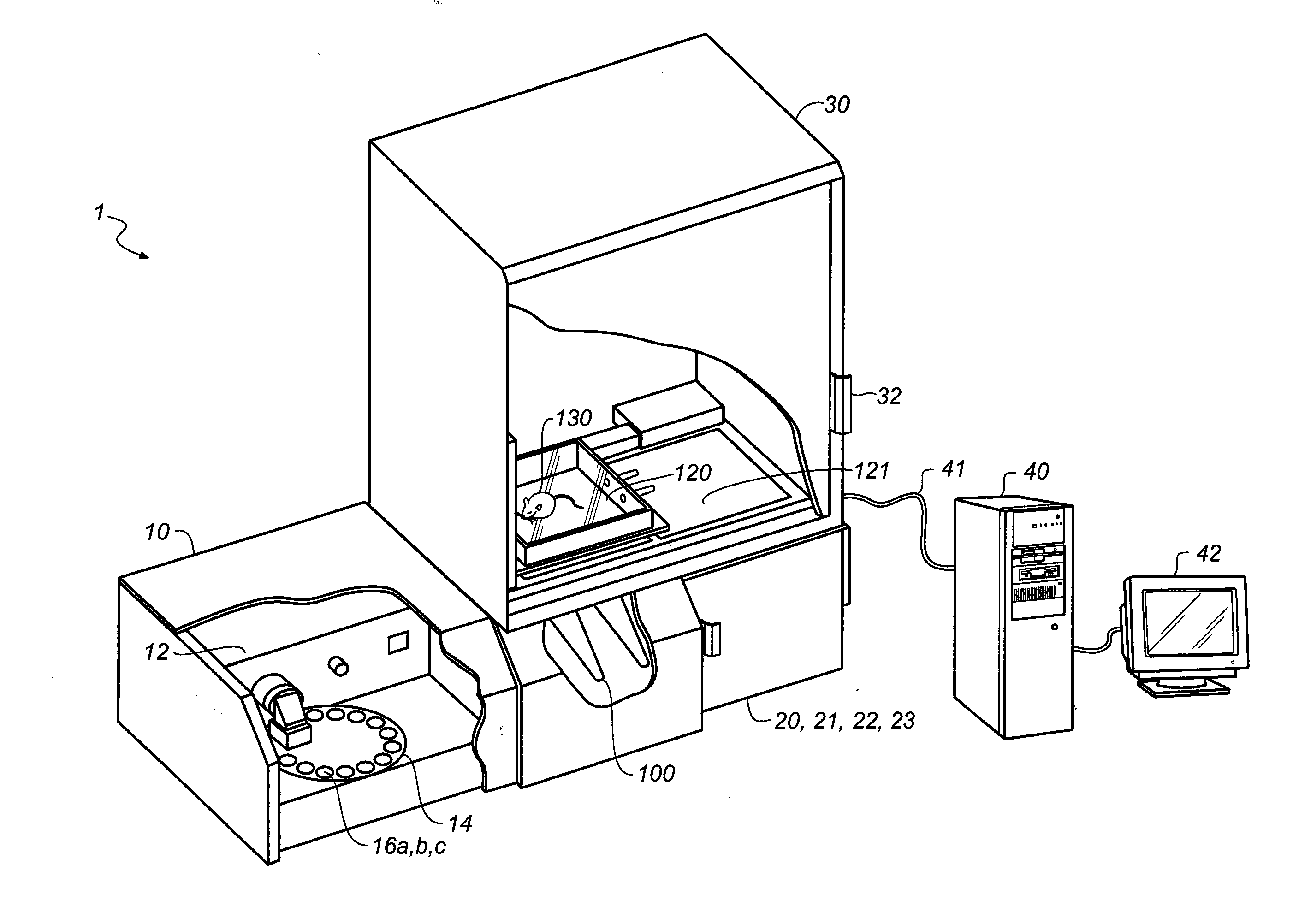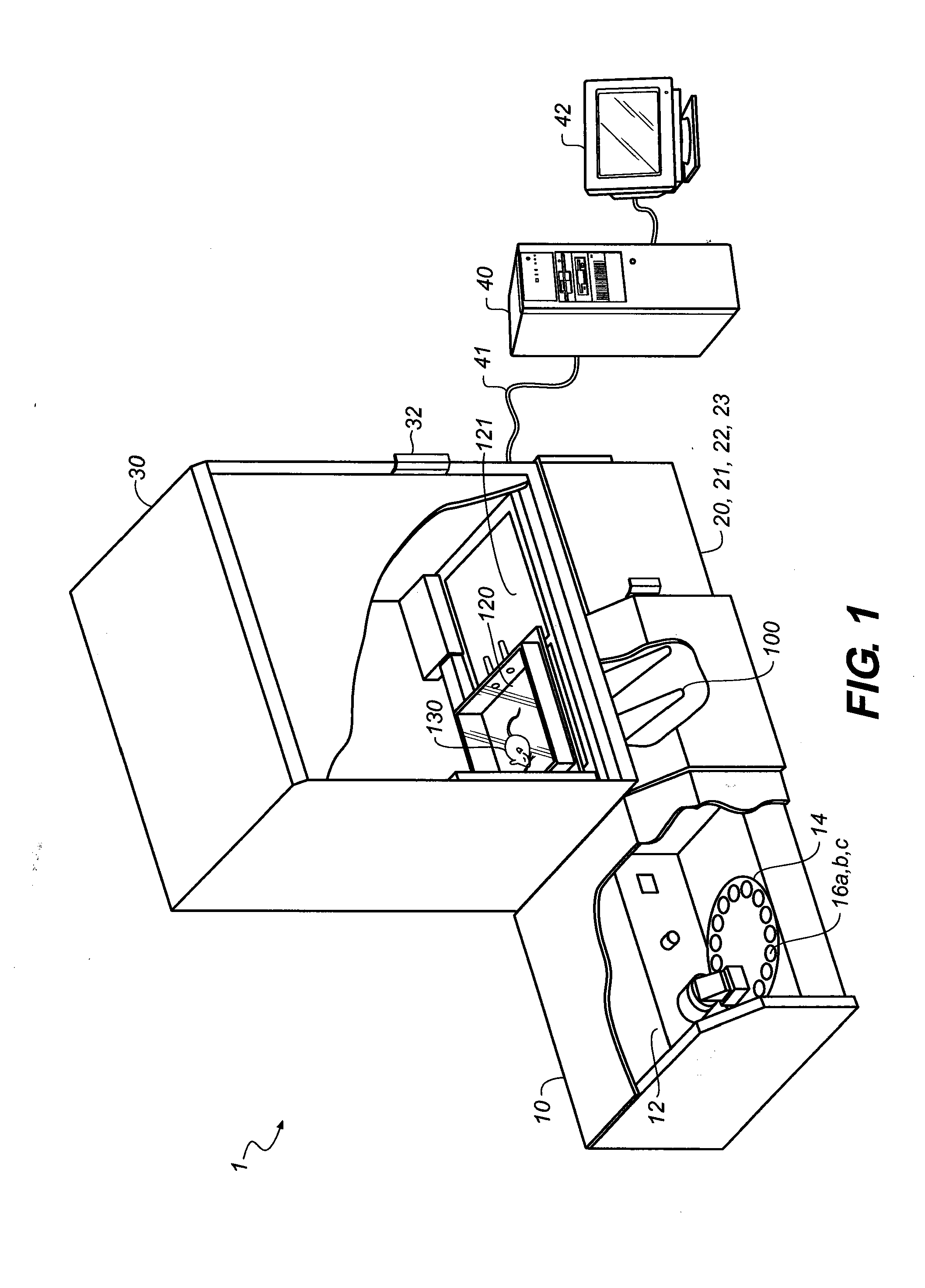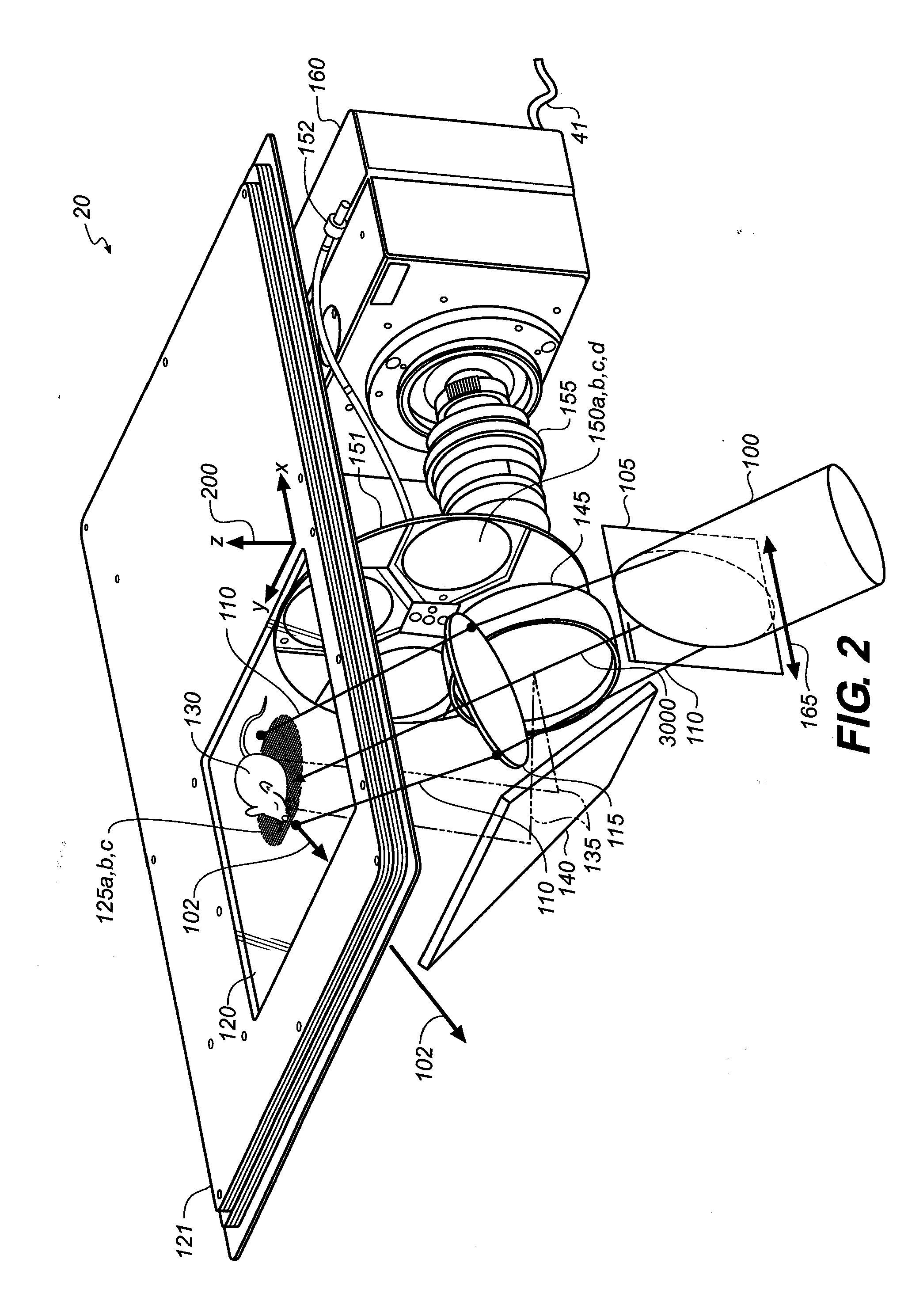Apparatus and method for fluorescence imaging and tomography using spatially structured illumination
a technology of spatial structure and apparatus, applied in the field of imaging systems, can solve the problems of not teaching thorwirth how to adapt the disclosed arrangement, tromberg not teaching how to minimize excitation radiation, etc., and achieve the effect of reducing excitation radiation
- Summary
- Abstract
- Description
- Claims
- Application Information
AI Technical Summary
Benefits of technology
Problems solved by technology
Method used
Image
Examples
first embodiment
[0042]FIG. 2 shows a cutaway perspective view of components of image capture module 20 in accordance with the present invention wherein spatially modulated excitation radiation is delivered from direction “a” using projection optics comprised of a non-telecentric Scheimpflug lens system 115. The X-Y-Z coordinate system is defined 200. Excitation radiation 100 is transmitted through a one-dimensional spatial modulation grid 105. The spatial modulation grid is coplanar with the object plane of a non-telecentric Scheimpflug lens system 115. In the embodiment shown, the non-telecentric Scheimpflug lens system includes a single lens group as indicated; however, generally more than one lens group may comprise a non-telecentric Scheimpflug lens system. The spatial modulation grid is configurable or movable to produce a plurality of phases that shift along the direction indicated by arrow 165. Lens system 115 delivers the spatially modulated excitation radiation through a beam path 110 to t...
second embodiment
[0050]FIG. 12 shows a cutaway perspective view of components of the image capture module 21 in accordance with the present invention wherein spatially modulated excitation radiation is delivered from direction “a” using projection optics including a non-telecentric Scheimpflug lens system 115. This embodiment is similar to the embodiment shown in FIG. 2, however an additional spatial modulation grid 106 and non-telecentric Scheimpflug lens system 116, mirror-symmetric to spatial modulation grid 105 and non-telecentric Scheimpflug lens system 115 across the X-Z plane bisecting the platen 120, are included for delivery of excitation radiation from direction “b” in an additional step. FIGS. 13A, 13B and 13C show cutaway diagrammatic views of the image capture module 21 configured according to FIG. 12. FIGS. 13A, 13B and 13C are similar to FIGS. 7A, 7B and 7C.
[0051]FIG. 14 shows a cutaway perspective view of the image capture module 21 of FIG. 12 wherein spatially modulated excitation r...
third embodiment
[0053]FIG. 17 shows a cutaway perspective view of components of the image capture module 22 in accordance with the present invention wherein spatially modulated excitation radiation is delivered from direction “a” using projection optics including a doubly telecentric Scheimpflug lens system 215. This embodiment is similar to the embodiment shown in FIG. 12, except the non-telecentric Scheimpflug lens systems 115 and 116 have been replaced with doubly telecentric Scheimpflug lens systems 215 and 216, respectively. In the embodiment shown, the doubly telecentric Scheimpflug lens systems each include two lens groups as indicated; however, generally more than two lens groups may comprise a doubly telecentric Scheimpflug lens system. By “doubly telecentric”, it is meant that the lens system provides both object space telecentricity and image space telecentricity. The lens system delivers the spatially modulated excitation radiation through a beam path 210 to the surface of the platen 12...
PUM
 Login to View More
Login to View More Abstract
Description
Claims
Application Information
 Login to View More
Login to View More - R&D
- Intellectual Property
- Life Sciences
- Materials
- Tech Scout
- Unparalleled Data Quality
- Higher Quality Content
- 60% Fewer Hallucinations
Browse by: Latest US Patents, China's latest patents, Technical Efficacy Thesaurus, Application Domain, Technology Topic, Popular Technical Reports.
© 2025 PatSnap. All rights reserved.Legal|Privacy policy|Modern Slavery Act Transparency Statement|Sitemap|About US| Contact US: help@patsnap.com



